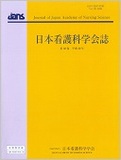Japanese
English
- 販売していません
- Abstract 文献概要
- 参考文献 Reference
- サイト内被引用 Cited by
要旨
目的:介護老人福祉施設に勤務する看護師が高齢者の死の約1か月前に察知した症状や変化を明らかにすることを目的とした.
方法:Miles, Huberman, and Saldañaの分析方法を参考にし,20名の看護師に半構造化面接法を用いてインタビューを行った.同意が得られた施設では同行観察を行った.
結果:20名全員が約1か月前に,高齢者の死を察知した経験を持っていた.その症状や変化は,【高齢者が訴える死の恐怖】,【意欲の減弱】,【食事摂取機能の低下】,【形相の変化】,【眼の変化】,【声の変容】,【他覚症状の出現】,【活動性の低下】,【体重減少】が抽出された.これらは,さらに上位の概念である主要カテゴリー『精神心理面の変化』と『身体機能面の変化』に大別された.
結論:看護師は約1か月前に高齢者の死を症状や変化で察知していた.必ずしもすべての症状や変化が1人の高齢者に出現するわけではないが,看護師が高齢者の死を察知し,十分な時間の中で看取りを行えることが示唆された.
Purpose: This research was aimed at elucidating and obtaining suggestions from nurses working in nursing home (hereafter, nurses) on how they prognosticate the death of the elderly approximately one month before the actual death.
Methods: In this study, 20 nurses working in nursing homes from 15 facilities in the Kanto and Tokai regions were interviewed using the semi-structured interview method. In addition, with the permission from the facilities, the nurses were also put under observation. The data obtained were qualitatively analyzed using the analysis method proposed by Miles, Huberman, and Saldaña.
Results: All the included nurses had foreseen the death of the elderly approximately one month before the actual death. The qualitative data analysis revealed that nurses prognosticated the death of the elderly using nine categories of symptoms and changes such as “fear of death expressed by the elderly,” “diminishing motivation,” “decline in the function of meal intake,” “changes in facial expression,” “changes in the eyes,” “changes in voice,” “appearance of objective symptoms,” “declining in activities,” and “weight loss.” These symptoms and changes were broadly classified into “changes in psychological aspects” and “changes in physical function” as major categories with higher concepts.
Conclusion: Nurses perceived the death of the elderly approximately one month before based on certain symptoms and changes. Although not all symptoms and changes necessarily appear in one elderly person, it was suggested that the nurse would perceive the death of the elderly and accordingly take end-of-life care in a sufficient time.
Copyright © 2018, Japan Academy of Nursing Science. All rights reserved.


